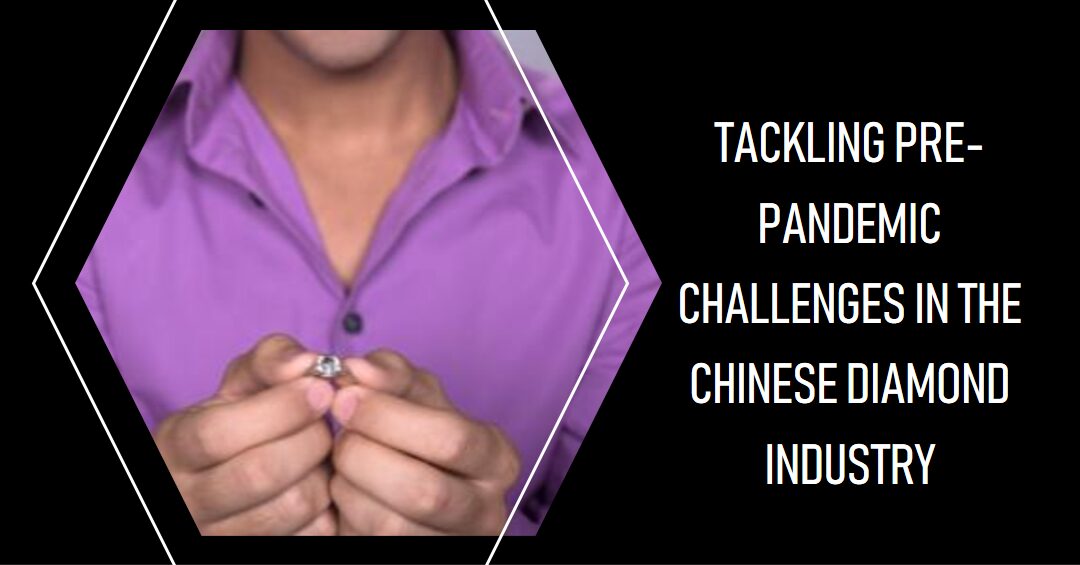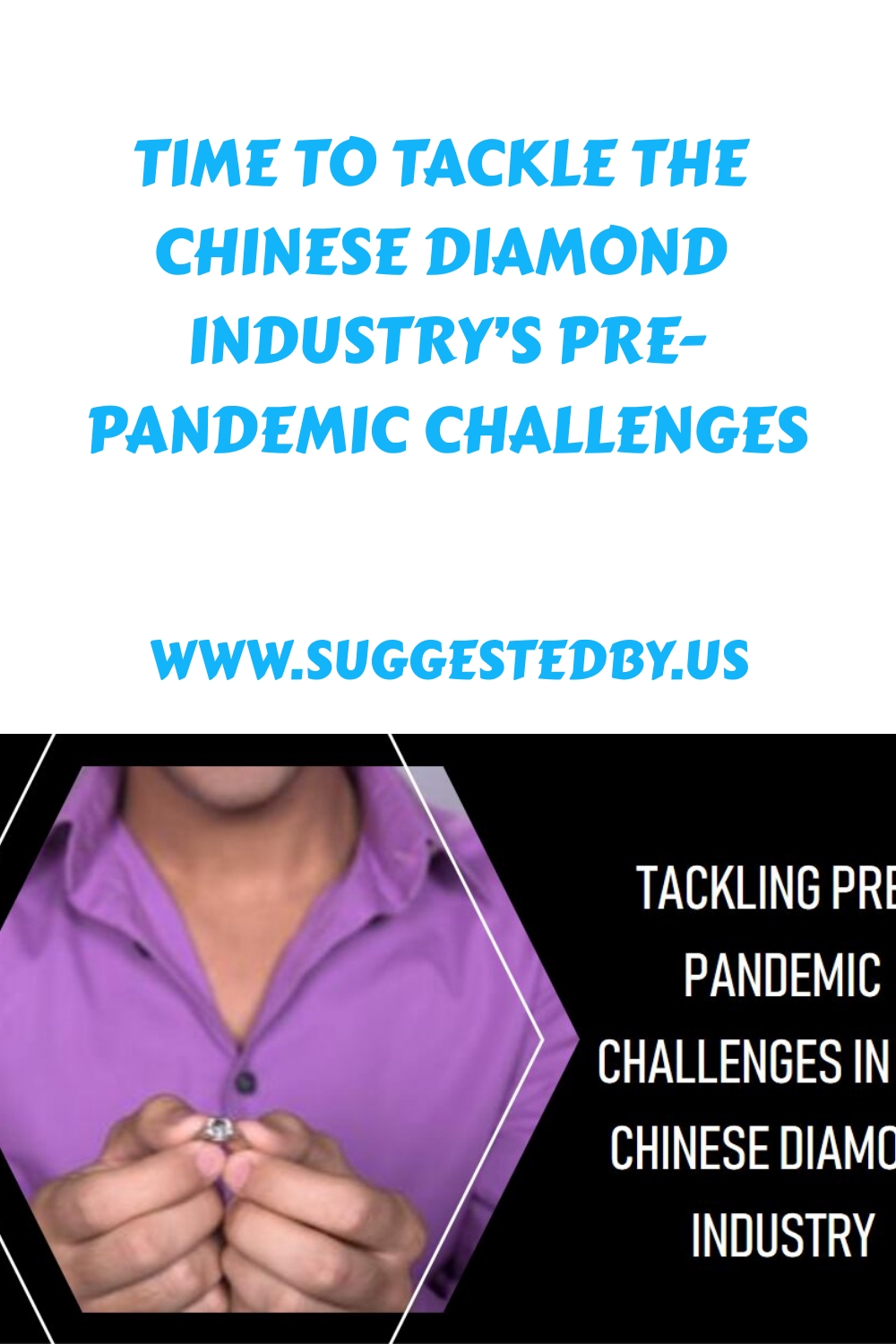As members of the esteemed diamond industry, we stand united at a pivotal juncture. Our collective journey forward necessitates a proactive engagement with the sector’s pre-pandemic challenges.
Beyond the recent upheavals, we must address the economic fluctuations that have long influenced market dynamics. The cautious consumer spending, particularly in influential markets such as China, requires our astute attention and strategic adaptation.
In addition, the emergence of lab-grown diamonds has sparked a conversation on innovation and tradition—a dialogue we must lead with wisdom. As we consider the impact of pricing volatility and import restrictions, especially on the Indian market, our resolve to overcome these obstacles must be stronger than ever.
Together, we are tasked with fortifying our industry’s foundations, ensuring that the path forward is resilient and reflective of our commitment to excellence and unity.
Article Contents
- 1 Key Takeaways About the Diamond Industry’s Pre-Pandemic Challenges
- 2 Economic Headwinds Revisited
- 3 Chinese Market’s Cautious Stance
- 4 Synthetic Diamonds Disruption
- 5 Persistent Pre-COVID Difficulties
- 6 India’s Market Weakness
- 7 Revamping the Rough Diamond Trade
- 8 Strategic Moves Forward
- 9 Frequently Asked Questions
- 10 Some Conclusions
Key Takeaways About the Diamond Industry’s Pre-Pandemic Challenges
- Global economic uncertainty and the cautious stance of the Chinese market were impacting the diamond industry before the pandemic.
- The threat of lab-grown diamonds gaining popularity and synthetic diamonds influencing market approach were challenges that the industry was facing.
- The industry needed to adapt to evolving preferences and regulations and find strategies that resonate with these changes.
- Oversupply, decline in polished prices, and financial strain on traditional jewelers were pre-existing challenges that needed to be addressed.
Economic Headwinds Revisited
Amidst a climate of global economic uncertainty, the diamond industry must confront persistent headwinds that have resurfaced from the pre-pandemic era. These difficulties are not novel; they existed well before the world grappled with COVID-19’s unforeseen disruptions. A thorough analysis reveals that the diamond industry’s pre-pandemic landscape was already fraught with challenges—the same economic headwinds revisited today.
The Chinese market, once a bulwark of consistent demand, has adopted a posture of chinese caution, contributing to a global slowdown. This reticence has been compounded by the threat of lab-grown alternatives, which are increasingly gaining favor for their cost-effectiveness and ethical allure. These synthetic stones, once a fringe concern, now cast a long shadow over traditional miners and cutters, who must innovate or face obsolescence.
The industry’s stakeholders, bound by a shared heritage and pursuit, must navigate these pressures with strategic foresight. By embracing change and addressing these systemic issues head-on, the diamond sector can hope to reinforce its position and foster a sense of enduring belonging among its members. The path ahead is complex but by no means insurmountable, with unity and adaptability being key to weathering the storm.
Chinese Market’s Cautious Stance
Several factors have led to a significant reduction in diamond purchases from the Chinese market, further complicating the industry’s path to recovery. The cautious stance of Chinese buyers reflects a strategic response to a confluence of economic shifts and regulatory reforms within the country. This caution has not only stemmed from a slowdown in China’s economic growth but also from the government’s stringent oversight on luxury spending. Consequently, the diamond industry’s pre-pandemic challenges are exacerbated, underscoring the need for a nuanced understanding of the Chinese market’s influence.
The reduction in demand for certain diamond characteristics indicates a shift in trading patterns, which requires a reevaluation of the industry’s approach to engaging with the Chinese market. The threat of synthetic diamonds, coupled with the recurring difficulties that existed before the pandemic, also plays a pivotal role in shaping the market’s cautious approach.
As the industry navigates through this period of uncertainty, it is imperative to forge strategies that resonate with the evolving preferences and regulations that are characteristic of the Chinese market. Recognizing the significance of China’s role, the diamond sector must adapt to maintain a sense of belonging and ensure its relevance to this critical audience.
Synthetic Diamonds Disruption
Within the context of the diamond industry’s numerous hurdles, the emergence of synthetic diamonds has introduced a significant disruption that necessitates strategic adaptation and innovation. As sales soared for lab-grown diamonds, traditional diamond trades faced current concerns over their ability to compete. The proliferation of lab-grown diamonds presents both a challenge and an opportunity for stakeholders to redefine their value propositions and capitalize on the growing consumer interest in sustainability and ethical production.
| Traditional Diamonds | Lab-Grown Diamonds |
|---|---|
| Mined from the earth | Created in a lab |
| Historically revered | Increasing popularity |
| Higher price points | More affordable |
| Questioned ethics | Marketed as ethical |
| Supply-driven market | Demand-driven market |
The diamond industry’s response to this upsurge has been multifaceted, focusing on marketing campaigns that emphasize the timeless allure of natural diamonds, while also exploring ways to incorporate the lab-grown segment into their portfolios. This shift reflects an analytical approach to balancing the allure of tradition with the innovative appeal of lab-grown alternatives.
As the industry recalibrates its strategies to address these evolving dynamics, it is equally important to confront the persistent pre-covid difficulties that continue to loom over the sector.
Persistent Pre-COVID Difficulties
Beyond the disruption caused by lab-grown diamonds, the diamond industry must also confront enduring challenges that predate the pandemic, including oversupply, consumer behavior shifts, and financial pressures on traditional jewelers. The industry’s resilience is being tested by a cocktail of persistent difficulties that have simmered beneath the surface for years.
Oversupply has been a thorn in the side of the trade, leading to a buyer’s market where demand remains stagnant and profit margins are squeezed. This has been exacerbated by rough production growth in 2017 and 2018, which did not align with consumer demand. The consequent decline in polished prices, as evidenced by the RapNet Diamond Index’s sharp fall, indicates that these issues are not mere blips but are indicative of deeper systemic challenges.
Furthermore, the cautious approach of the Chinese market and the threat posed by lab-grown diamonds have prompted an existential re-evaluation within the sector. De Beers and other major players have had to navigate these troubled waters while also contending with shifts in consumer purchasing behavior.
The financial strain on traditional jewelers is compounded by banks tightening lending, which, coupled with the retirement of baby boomer jewelers, signals a transformation in the industry’s foundation. These factors, which existed before COVID, require strategic foresight and a collective effort to ensure the industry’s continuity and relevance.
India’s Market Weakness
Amid these enduring industry challenges, a significant portion of India’s diamond market is grappling with reduced demand, competitive pressures, and financial instability.
While global jewelry sales soared in certain areas, India has not uniformly benefited from this uplift due to a confluence of factors:
- Economic Headwinds: The US economic softness has trickled down, impacting the sales within one of India’s vital export markets.
- Rise of Lab-Grown Diamonds: The burgeoning presence of lab-grown diamonds presents a formidable competition, eroding the market share for naturally mined stones.
- Chinese Market Slowdown: The deceleration in China’s economic activity, coupled with stringent anticorruption measures, has curtailed luxury purchases, affecting demand.
- Inventory Surpluses: High inventory levels, a result of aggressive rough diamond buying during the post-pandemic recovery phase, have exacerbated the market weakness in India.
In dissecting these elements, it becomes clear that the diamond industry, particularly in India, must navigate through a labyrinth of pre-pandemic challenges that have been magnified in the current economic landscape.
There is a pressing need for strategic adjustments and innovative measures to strengthen the industry’s foundation and regain equilibrium in the Indian market.
Revamping the Rough Diamond Trade
Addressing inefficiencies in the rough diamond trade is imperative for rectifying the supply imbalances that have plagued the industry since before the pandemic. The diamond sector’s challenges are profound, ranging from economic turbulence to shifts in consumer sentiment. Tackling the diamond industry’s pre-existing issues requires a thoughtful approach that considers the nuances of the market.
For instance, the rough trade must be revamped to mitigate the impact of stockpiling practices that lead to artificial scarcity and inflated prices. In 2019, manufacturers acquired rough diamonds beyond their processing needs to secure favored pieces from major suppliers. The post-Covid recovery buying exacerbated this behavior’s distortion of market dynamics. As a result, high inventory levels soared on Black Friday, yet the underlying issue—COVID-19—has not gone away. Instead, they persist, complicating the industry’s path to equilibrium.
Revamping the rough trade calls for stricter adherence to supply and demand principles. It involves streamlining procurement processes and fostering transparency to rebuild trust among stakeholders. The industry must adapt to the evolving economic landscape, where cautious trades and lending practices are the new norms. It is through such strategic reforms that the diamond industry can hope to overcome its pre-pandemic challenges and secure a more sustainable and equitable future.
Strategic Moves Forward
To overcome its pre-pandemic challenges, the diamond industry must zero in on strategic initiatives that enhance value chain efficiency and consumer trust. As global economic headwinds persist and the allure of lab-grown alternatives rises, a concerted effort to bolster the industry’s standing is imperative.
Here are key strategic moves to consider:
- Embrace Transparency: Building consumer trust is paramount. Transparency across the value chain, from ethical sourcing to sales, can reassure consumers of their purchases’ integrity.
- Optimize Inventory Management: Avoiding overproduction and surplus is crucial. Strategic inventory control can help prevent market saturation and maintain diamond value, ensuring that sales don’t just soar on Black Friday but throughout the year.
- Invest in Marketing and Branding: De Beers’ shift to a brand-centric approach underscores the power of branding. Reinforcing the emotional and aspirational value of diamonds can rekindle consumer desire and loyalty.
- Leverage Technology: Advancements in technology can streamline operations and improve the customer experience. Incorporating cutting-edge tools for design, manufacturing, and retail can set new industry standards.
These steps, when executed with precision and foresight, can help the diamond industry shine even in the darkest times. As sales soared on Black Friday, it’s a reminder of the latent potential when strategic initiatives align with consumer expectations.
Frequently Asked Questions
What Are the Challenges of Diamond Industry?
The diamond industry faces several challenges, including economic uncertainty, increased competition from synthetic diamonds, market saturation, and stringent financing regulations, all of which necessitate strategic adjustments for future resilience and growth.
What Is the Outlook for the Diamond Industry?
The diamond industry’s outlook appears cautiously optimistic, with potential demand upticks from holiday sales, despite persistent challenges such as economic uncertainty and competition from lab-grown alternatives. Strategic adjustments are essential for sustained recovery.
Why Is Diamond Market Going Down?
The diamond market downturn is attributed to economic fluctuations, increased lab-grown diamond competition, and a significant reduction in Chinese consumer spending, necessitating strategic industry responses to navigate these persistent challenges effectively. China’s diamond industry has been particularly impacted by the reduction in consumer spending, as the country was one of the largest markets for diamond consumption. In response, industry leaders are exploring innovative marketing strategies, investing in research and development for lab-grown diamonds, and expanding into emerging markets to offset the decline in Chinese demand. By adapting to the changing landscape of the diamond market, companies can position themselves for long-term success despite the challenging conditions.
Have Lab-Grown Diamonds Gone Down in Price?
Lab-grown diamonds have experienced a price decrease due to technological advancements and increased production efficiency, making them more accessible to consumers seeking cost-effective and ethically sourced alternatives to natural diamonds.
Some Conclusions
In the crucible of adversity, the diamond industry is tasked with forging a path through a labyrinth of longstanding challenges.
Economic fluctuations, emerging synthetic alternatives, and the Chinese market’s reticence symbolize a triad of Herculean trials.
Indian market’s fragility and the rough trade’s volatility are additional knots in the industry’s Gordian complexity.
Strategic innovation and resilience are the twin pillars essential for the sector’s metamorphosis, ensuring its brilliance endures beyond the ephemeral trials of the present.






